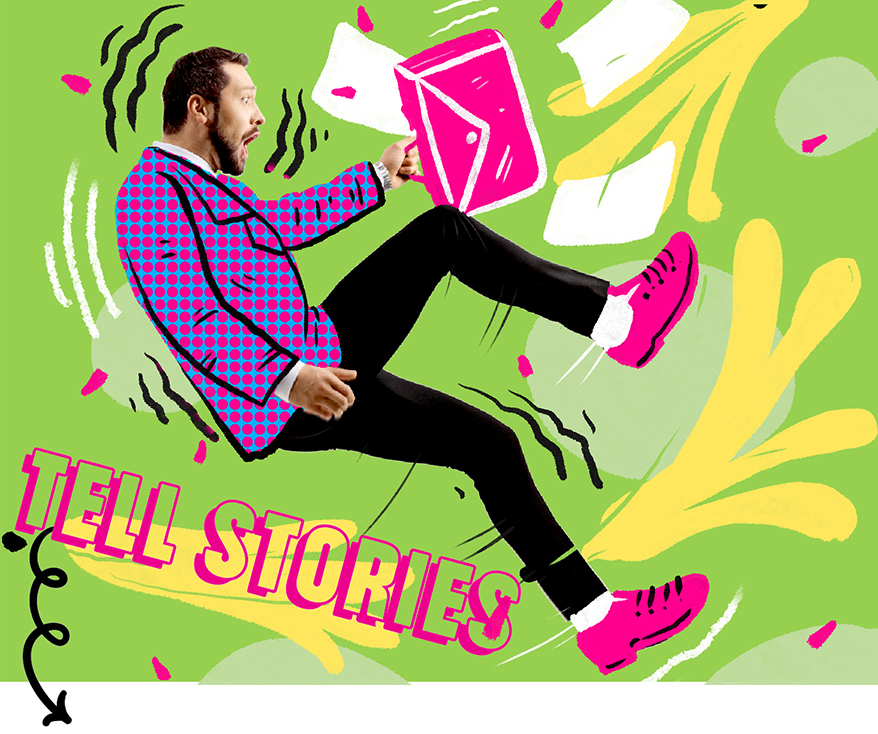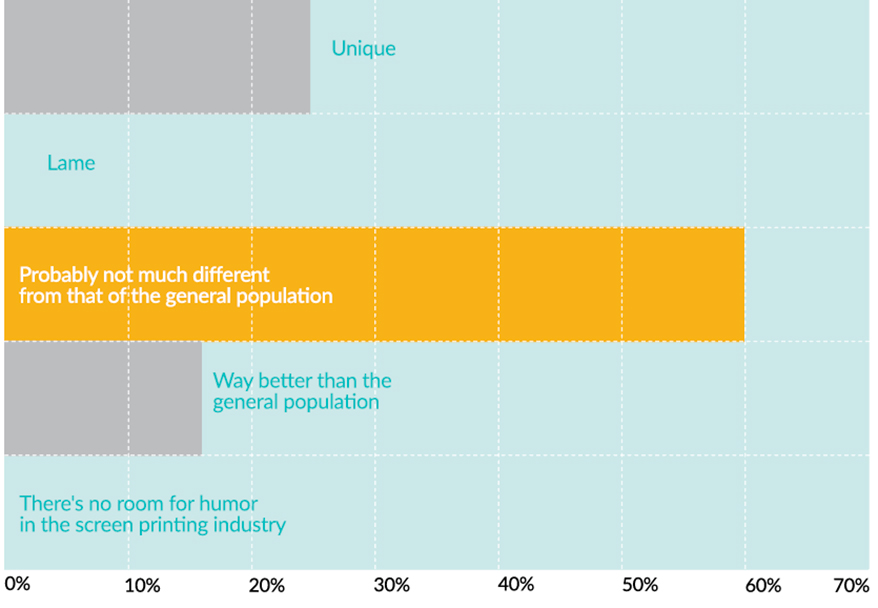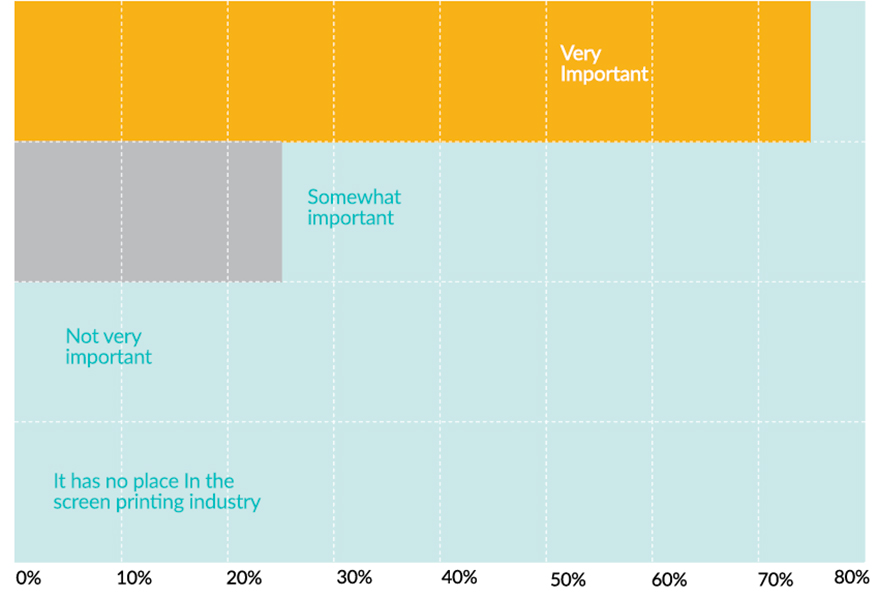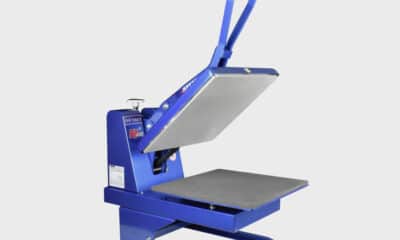
Most workplaces could do with a bit more humor. Not only does it boost mood and morale, but also team performance and even the bottom line. Learn how you can bring the funny.
Published
2 years agoon
 STOP US IF YOU’VE heard this one, but the list of benefits from fostering an environment of levity in the workplace is staggering:
STOP US IF YOU’VE heard this one, but the list of benefits from fostering an environment of levity in the workplace is staggering:
It boosts sales and productivity, makes advertising memorable, and leaders appear more competent and likeable. It transforms training and chores into something enjoyable, increases employee retention, and attracts eager new hires. It flattens hierarchies, enhances collaboration, heightens bonding, and encourages people to take positive risks. It lowers stress, builds resilience, reduces hostility, deflects criticism, improves morale, creates engagement, and helps management communicate difficult messages. It essentially costs nothing (indeed, a 2011 study by researchers at Pennsylvania State University found that a good laugh activates the same regions of the brain that light up over a fat bonus check). Perhaps best of all, it simply makes coming into the office more enjoyable for everyone.
So, what’s the punch line? The rather depressing one that many bosses and workers, especially those in more “professional” settings, think humor is a bad idea … at least in their circumstances at their places of work. And that mindset is growing.
In both the workplace and society, we’re increasingly shying away from levity. According to some studies, we spend about a third as much time laughing as people did in the 1930s. Another study found 90 percent of corporate emails are completely devoid of humor, not even a chirpy sign-off.
What could explain this? There are three main reasons, all of which you’re probably quite familiar with: humor is viewed as inappropriate for the serious discourse of business; it’s hard to do well (it feels like a divinely bestowed gift – you were either the funny kid in school or you weren’t); and it’s dangerous. Jokes are about a shared view of the world, an understanding of the same cultural and linguistic touchpoints and, crucially, a willingness to violate the same norms and laugh at the same things. When they bomb, it’s ostracizing. Worse, if the quip or story is viewed as offensive, it can damage the teller’s professional standing by making him appear lacking in both competence and intelligence.
“The violating nature of humor is what makes it risky,” says Maurice Schweitzer, a professor of business at the University of Philadelphia’s Wharton School and the author of several studies on workplace humor. “Jokes that go too far over the line of appropriateness cause an ‘eeeek’ reaction. Rather than thinking the joke teller is intelligent and competent (as happens when someone lands a good one), observers think, ‘What an idiot! Or I can’t believe he just said that.’”
AdvertisementIn short, humor is one more wonder drug that can kill you. It’s not unwise to be wary of its power.

The argument for avoiding humor because it somehow betrays your professionalism is widespread. But it in contrast to the very real risk in telling jokes, it’s built mostly on falsehoods. “The research is clear: humor can be one of the most powerful tools we have for accomplishing serious things,” says behavioral scientist Jennifer Aaker, co-author of Humor, Seriously: Why Humor Is A Secret Weapon In Business and Life. “Gravity And levity aren’t at odds.”
Indeed, there’s a good argument that the higher the stakes, the more we need humor. (See: Ukrainian President Volodymyr Zelensky’s response to Washington’s offer to evacuate him: “I need ammo, not a ride.” Given the stakes don’t get much higher than facing an invading Russian army.)
“I believe humor is one of the highest virtues in life,” says Kyle Baker of Baker Prints in Chicago. “Working on very difficult jobs on hard deadlines and juggling an airtight but constantly shifting production schedule can be very stressful. A good sense of humor is critical to having perspective and not getting too bent out of shape when things go pear shaped.”
But even in these slightly more routine situations – on the shop floor or in the conference room – a little humor can do wonders, easing an employee’s anxiety or lowering a customer’s defenses.
Advertisement“Humor builds culture in your shop. It helps customers or even employees be themselves. It keeps things real,” says Nate Hansen of Hansen Screen Printing in Elkhorn, Wisconsin. That’s not just the confidence of an experienced screen printer; it’s a truth across industries and professions.
Aaker and her co-author Naomi Bagdonas quote Eric Schmidt, the executive chair of google as saying: “I’ve learned (often the hard way) that the best way to be taken seriously is to not take yourself too seriously.”
In your own business, think of the first-time apparel purchaser or a brand-new catcher. They’re likely feeling out of their depth and intimidated. A cheerless, all-business screen printer is the last thing their overwhelmed mind wants to be dealing with at that moment.
“Running a business is stressful. Running a business in this industry is very stressful. You have to be able to laugh and not have the mood get too heavy or the whole vibe of a business can take a nosedive,” says Damian Hobson of Dynamic Screen Printing Supply in Ontario, Canada.
Disarmed, a customer is then more likely to listen and more likely to be in the mood to buy. Done right, humor has the power to build bridges instantly, lull the client into surrendering useful personal information, and overcome objections. “I use humor a lot, in several capacities, most notably when teaching new printers,” says Eric Carnell of Independence Printage Corp in Bellevue, Washington. “We all know confidence building is an important part of growing one’s skill set. Some mild self-deprecating humor can help lighten the room to a new, nervous printer. Stories of things that have gone wrong in the past, with a funny tie-in is extremely helpful in building relationships. I work with a client that got in touch with me very early on in their business (a brewery that is pretty large now), and the second time I spoke to the owner on the phone, they asked me: ‘Do you ever regret starting your own business?’ and I replied ‘Only every single morning when I get up and face the workday.’ We both got a good laugh and it was the launch of a very tight relationship.”
“Humor makes you likable and people want to buy from people they like because they trust them and have more confidence in them,” says sales trainer Jeffrey Gitomer. “The end of laughter is followed by the height of listening.” But I’m not that sort of funny, you say. Few of us are. Mercifully, it’s not that hard to get better.
AdvertisementHumor is a skill, which means it can be learned. And besides, you don’t need to be professional comedian level funny, you just need to be funnier than the dour apparel decorator down the road.
“Just as you don’t need to be Phil Mickelson to do well at the company golf outing, you don’t need to be Amy Schumer, Ali Wong, or John Mulaney to use humor well in the workplace,” writes Brad Bitterly and Alison Wood Brooks in Sarcasm, Self-Deprecation, And Inside Jokes: A User’s Guide To Humor At Work.
Studies even show that something as simple as adding a lighthearted line at the end of a sales pitch like “My final offer is X and I’ll throw in my pet frog” can increase customers’ willingness to pay nearly 20 percent more.
“Really let it sink in how bad that joke is. The bar is so low,” says Bagdonas.
Dr. Robert Provine, a neuroscientist at the University of Maryland, and probably the world’s leading laughter scientist, has spent most of his professional life collecting examples of the most hilarity-inducing lines in conversations. Brace yourself. They are: “I know.” “I’ll see you guys later.” “I see your point.” “It was nice meeting you.”
Such lines point to a truth about everyday humor; it’s often little more than a mindset or attitude.
“The funny thing about humor is that we don’t need to tell a joke to get a laugh. It can be enough simply not to take yourself too seriously,” notes business communication expert Carmine Gallo in The Story Teller’s Secret.”
Bagdonas concurs: “This is not about becoming a comedian, It’s about looking at the world in a different way. And the good news is that our lives are already full of humor if we only notice. When we live our lives on the precipice of a smile, we shift how we interact with the world.”
There’s another benefit about taking such an active approach to humor. It makes you more aware of the many little things going on in life, and when searching for the humorous spin, you are also searching for the positive, even in the worst things that happen. As the old saying goes, comedy is just tragedy plus time. What’s a disaster today, is great material tomorrow.
For Mark Twain, arguably America’s greatest wit, humor wasn’t some optional extra. It was the key to a good life. “Humor is the great thing,” he wrote. “The saving thing. The human race has only one really effective weapon and that is laughter.”
In the following pages, we provide tips from your fellow screen printers, comedians, academics, and our own reading that will hopefully allow you to up your humor game, and your business operations as well.
LOOK FOR TRUE,
NOT FUNNY
 If you want to have more humor in your life, don’t look for what’s funny, just look for what’s true, says Naomi Bagdonas, a lecturer at Stanford Graduate School of Business and coauthor of Humor, Seriously. “So become an observer of your life. Look for little oddities or incongruities. It’s not about being funny per se, but using humor in small intentional ways.” Jerry Seinfeld, arguably the most successful American comedian of the last few decades, has made a sparkling career from this sort of observational humor: What’s the point of straws? Or one-speed bikes? Why do your kids have names like stars? His genius is in seeing the funny in the thing right in front of your nose.
If you want to have more humor in your life, don’t look for what’s funny, just look for what’s true, says Naomi Bagdonas, a lecturer at Stanford Graduate School of Business and coauthor of Humor, Seriously. “So become an observer of your life. Look for little oddities or incongruities. It’s not about being funny per se, but using humor in small intentional ways.” Jerry Seinfeld, arguably the most successful American comedian of the last few decades, has made a sparkling career from this sort of observational humor: What’s the point of straws? Or one-speed bikes? Why do your kids have names like stars? His genius is in seeing the funny in the thing right in front of your nose.
Bagdonas agrees: “Just look around your life and notice these simple true things.” Such an approach also leverages the psychological principle of priming, which states our brains are wired to see what we’ve been set up to expect. Start looking for the humorous and you’ll find it everywhere: in your commute, in your efforts to bring life to heel, in the mirror.

 The safest humor involves personal stories because they are guaranteed to be original. And they can be practiced and perfected in your own highly personalized style. Keep in mind there’s nothing funny about a confident person who’s doing well. The best stories involve those when life threw you a banana peel. Your new trainee using the same screen mesh for all jobs is not funny today … but it will be when you get to Vegas and talk shop with other store owners. As the late humorist Jeanne Robertson wrote in Don’t Let The Funny Stuff Get Away, humor is not about one-liners or being able to tell jokes, it’s about accepting things about yourself that can’t be changed and finding the humor in the situations around you. Final key technical point: Crafting a funny story involves knowing the ending and working backward. Keeping the punchline in mind will help you determine which details are essential for your story. If it doesn’t directly set up your punch line, cut it.
The safest humor involves personal stories because they are guaranteed to be original. And they can be practiced and perfected in your own highly personalized style. Keep in mind there’s nothing funny about a confident person who’s doing well. The best stories involve those when life threw you a banana peel. Your new trainee using the same screen mesh for all jobs is not funny today … but it will be when you get to Vegas and talk shop with other store owners. As the late humorist Jeanne Robertson wrote in Don’t Let The Funny Stuff Get Away, humor is not about one-liners or being able to tell jokes, it’s about accepting things about yourself that can’t be changed and finding the humor in the situations around you. Final key technical point: Crafting a funny story involves knowing the ending and working backward. Keeping the punchline in mind will help you determine which details are essential for your story. If it doesn’t directly set up your punch line, cut it.
USE HUMOR
THAT HAS A POINT
 Our brains don’t like or recall boring things, which is why funny ads are remembered. “We like to use humor in our social posts as often as possible,” says Ian Graham of Feels So Good in Austin.
Our brains don’t like or recall boring things, which is why funny ads are remembered. “We like to use humor in our social posts as often as possible,” says Ian Graham of Feels So Good in Austin.
However, there are two things to keep in mind when going for a humorous approach in your advertising: 1) studies show your claims may not be taken as seriously; and 2) the humor needs to reinforce the principal point of your ad. “Here’s the litmus test,” says Wizard of Ads author Roy H. Williams: “If remembering the humor forces you to recall the message of the ad, the humor is motivated. Good job. But if recalling the humor doesn’t put you in memory of the ad’s main point, the humor is unmotivated and will make your ad less effective. Sure, people will like the ad. They just won’t buy what you’re selling.”
KEEP IT
SHORT
 Comedy is in the details, but you don’t want to overdo it, says San Francisco comic Reggie Steele: “Just enough to set the scene,” adding your description should be “as if you were talking to a blind person.” William Shakespeare may have written “Brevity is the soul of wit,” but funny guys have known you need to get to the funny fast forever. Writing comedy isn’t really about writing, it’s more about editing,” says Nihill.
Comedy is in the details, but you don’t want to overdo it, says San Francisco comic Reggie Steele: “Just enough to set the scene,” adding your description should be “as if you were talking to a blind person.” William Shakespeare may have written “Brevity is the soul of wit,” but funny guys have known you need to get to the funny fast forever. Writing comedy isn’t really about writing, it’s more about editing,” says Nihill.
START SMALL
 As you embark on your journey to find and share the funny, take tiny steps – your brain works better and you make better choices when you’re in your comfort zone. You’re also likely to approach customers more positively when it’s in a situation where you’ve had success before, writes Marcus Buckingham in The One Thing You Should Know. It’s like what Lonny Williams, of Freelance Arts in Caldwell, Idaho, says: “There’s a time to use humor and a time to be serious. Read the room and build into humor after customers know you’re a serious businessperson.”
As you embark on your journey to find and share the funny, take tiny steps – your brain works better and you make better choices when you’re in your comfort zone. You’re also likely to approach customers more positively when it’s in a situation where you’ve had success before, writes Marcus Buckingham in The One Thing You Should Know. It’s like what Lonny Williams, of Freelance Arts in Caldwell, Idaho, says: “There’s a time to use humor and a time to be serious. Read the room and build into humor after customers know you’re a serious businessperson.”
THE RULE
OF THREES
 Three is the smallest number of elements required to create a pattern. Once you start looking for it, you’ll see it everywhere (“Life, Liberty, and The Pursuit of Happiness,” “Blood, Sweat, and Tears,” “Sex, Drugs, and Rock ‘n’ Roll”). It works in humor when the pattern ends with something unexpected. “It seems that audiences are trained to laugh at the third item ,as well,” says David Nihill, the author of Do You Talk Funny. “It’s strange but true.” Think of every “Three men walk into a bar…” joke you’ve ever heard.
Three is the smallest number of elements required to create a pattern. Once you start looking for it, you’ll see it everywhere (“Life, Liberty, and The Pursuit of Happiness,” “Blood, Sweat, and Tears,” “Sex, Drugs, and Rock ‘n’ Roll”). It works in humor when the pattern ends with something unexpected. “It seems that audiences are trained to laugh at the third item ,as well,” says David Nihill, the author of Do You Talk Funny. “It’s strange but true.” Think of every “Three men walk into a bar…” joke you’ve ever heard.
COMEDY IS
WRITING
 Everyone knows that comedy is essentially a combination of what you say and how you say it – your material and your delivery. The often unmentioned third element is how you write it. Explaining his creative process to podcaster Tim Ferriss last year, Seinfeld mentioned dropped phone calls as an example. “It’s so stupid, people saying ‘I don’t know what happened just then,’ I think, let me see if I can create something: it’s like an archery target from 50 yards away, so I take out my bow and say, let’s see if I can hit that. I’ll write something and I’ll go back to it the day after and see if I like it … I love to spend an inordinate amount of time refining and perfecting it until it has a pleasing flow to my ear. And then I can’t wait to say it publicly. It’s like an experiment, and the audience dumps data on it. And it’s back to the re-write process.”
Everyone knows that comedy is essentially a combination of what you say and how you say it – your material and your delivery. The often unmentioned third element is how you write it. Explaining his creative process to podcaster Tim Ferriss last year, Seinfeld mentioned dropped phone calls as an example. “It’s so stupid, people saying ‘I don’t know what happened just then,’ I think, let me see if I can create something: it’s like an archery target from 50 yards away, so I take out my bow and say, let’s see if I can hit that. I’ll write something and I’ll go back to it the day after and see if I like it … I love to spend an inordinate amount of time refining and perfecting it until it has a pleasing flow to my ear. And then I can’t wait to say it publicly. It’s like an experiment, and the audience dumps data on it. And it’s back to the re-write process.”

 The bits comics do on stage have the feel of something raw and spontaneous. But good comics leave nothing to chance: every word, sentence, and gesture has been rehearsed and tested to find where the best laugh lines are. Yes, there are naturally funny people, but to get better requires practice. Find a space at home or work and tell your stories while recording them. “If it makes you laugh even a little on playback, then you have something good to work with,” says Nihill. True, you’ll probably hate the sound of your voice, but you’ll get used to it. The family pet dog can make a good first audience. But soon you’ll want to run your “bits” by co-workers, trusted friends, or old customers to see if they’re funny or instead prone to unintended interpretation. “If most of them laugh, keep it for your repertoire; if the majority groan, drop it. You’ve saved yourself some future pain.”
The bits comics do on stage have the feel of something raw and spontaneous. But good comics leave nothing to chance: every word, sentence, and gesture has been rehearsed and tested to find where the best laugh lines are. Yes, there are naturally funny people, but to get better requires practice. Find a space at home or work and tell your stories while recording them. “If it makes you laugh even a little on playback, then you have something good to work with,” says Nihill. True, you’ll probably hate the sound of your voice, but you’ll get used to it. The family pet dog can make a good first audience. But soon you’ll want to run your “bits” by co-workers, trusted friends, or old customers to see if they’re funny or instead prone to unintended interpretation. “If most of them laugh, keep it for your repertoire; if the majority groan, drop it. You’ve saved yourself some future pain.”
MAKE FUN OF
PEOPLE CORRECTLY
 Make fun of what people do, not who they are. If you’re on the fence about whether to say a joke, don’t use CK Louis as your guide, says Bagdonas. “Don’t ask yourself, will this make me sound funny? Instead ask, how will this make other people feel? The goal isn’t to get a laugh, it’s to connect and to make people feel lighter and more at ease.” Most people know the taboos: Divisive racist, ethnic, or sexist jokes are out. Not only do you risk losing the sale, but you could damage the reputation of your business (and find yourself on the wrong end of a lawsuit). But you need to go further than simply watching out for someone’s background or identity. “Don’t punch down. So that means never making fun of someone of lower status,” says Aaker. Finally, check your distance – how close are you to the person you are making fun of? “I can make fun of my mother but not your mother,” says Aaker.
Make fun of what people do, not who they are. If you’re on the fence about whether to say a joke, don’t use CK Louis as your guide, says Bagdonas. “Don’t ask yourself, will this make me sound funny? Instead ask, how will this make other people feel? The goal isn’t to get a laugh, it’s to connect and to make people feel lighter and more at ease.” Most people know the taboos: Divisive racist, ethnic, or sexist jokes are out. Not only do you risk losing the sale, but you could damage the reputation of your business (and find yourself on the wrong end of a lawsuit). But you need to go further than simply watching out for someone’s background or identity. “Don’t punch down. So that means never making fun of someone of lower status,” says Aaker. Finally, check your distance – how close are you to the person you are making fun of? “I can make fun of my mother but not your mother,” says Aaker.
You can also make fun of yourself. “People love when you are humble and show your mistakes,” says Eric Solomon of Night Owls in Houston. “We’ve found it to be a good way to drum up conversation amongst clients, showing them silly things like screens breaking on press or prints that are obviously below quality standards.”

KNOW YOUR
HUMOR STYLE
 Bagdonas and Aaker contend that everyone has one of four humor styles:
Bagdonas and Aaker contend that everyone has one of four humor styles:
- Stand-Up: Bold, irreverent, and unafraid to ruffle a few feathers (Example: Wanda Sykes).
- Sweetheart: Earnest, understated, and use humor that lightens the mood (Example: James Corden).
- Sniper: Edgy, sarcastic, nuanced – masters of the dig (Example: Michelle Wolf).
- Magnet: Expressive, charismatic, and easy to make laugh (Example: Jimmy Fallon).
To determine your category, you can take their test at quiz.humorseriously.com.
How does the Brain Squad describe their senses of humor?

“The more you understand everyone’s styles, the easier it is to read the room and know when to drop that perfectly timed frog joke,” says Aaker. You’ll also be better able to mitigate risks. Sweethearts and magnets need to watch out for excessive self-deprecation that can undermine their reputations, while standups and snipers have to make sure they don’t offend or alienate.”
BOUNCE BACK
 The first rule when a joke bombs is don’t double down. Don’t repeat the joke, thinking people must not have heard it. They most likely did. And don’t explain it.
The first rule when a joke bombs is don’t double down. Don’t repeat the joke, thinking people must not have heard it. They most likely did. And don’t explain it.
Instead, skilled humorists quickly turn the joke on themselves, says Michael Kerr, a workplace trainer and author of The Humor Advantage, adding that you should make sure to deliver it in a warm, non-sarcastic tone. For example: “It takes a special human being to do what I just did,” or “This is great. Today was going too well anyway,” or “Thanks, I’ll be here all day.” As for those times when you cross the line and say something inappropriate, “that’s a very different scenario,” says Bagdonas. “The most important thing is to genuinely acknowledge it and get curious about your blind spot. Where was the empathy-fail that led you to this humor fail? So that you can learn from it and not make the same mistake in the future.”
“Humor can be very dangerous. What’s funny to one person is completely lost to another. There’s also the aspect of a ‘loaded’ joke with implied meaning. This usually comes with the addendum to the joke of ‘just kidding,’” says Mark Coudray of Coudray Growth Tech in San Luis Obispo, California.
IS SARCASM YOUR
SECOND LANGUAGE?
 Sarcasm has a reputation for being a low, mostly negative form of humor favored by teenagers when engaging with their parents or humiliating a peer. But studies show that when used appropriately it can boost creativity and expand the way we think about things; because it involves saying one thing and meaning another, interpreting it necessitates a higher level of abstract thinking. But it requires a cautious approach and works best when trust and playfulness have been established between parties, otherwise a wrongly placed sarcastic comment can appear flippant or cruel. “Until you’ve established trust, it’s best to communicate with respect,” Professor Adam Galinsky of Columbia Business School writes in the Harvard Business Review.
Sarcasm has a reputation for being a low, mostly negative form of humor favored by teenagers when engaging with their parents or humiliating a peer. But studies show that when used appropriately it can boost creativity and expand the way we think about things; because it involves saying one thing and meaning another, interpreting it necessitates a higher level of abstract thinking. But it requires a cautious approach and works best when trust and playfulness have been established between parties, otherwise a wrongly placed sarcastic comment can appear flippant or cruel. “Until you’ve established trust, it’s best to communicate with respect,” Professor Adam Galinsky of Columbia Business School writes in the Harvard Business Review.

KEEP A
JOURNAL
 Keep “A Funny Thing Happened on The Way to Work” file or journal to write down humorous things or events so you can remember them. It’s an assignment all Aaker and Bagdonas students are given at Stanford. “All that you do is you go through your day, and you jot down any moment when you laughed, or any moment when you had shared laughter,” Aaker says. Typically, their students report experiencing much more joy and laughter in their lives by the seventh day of this practice, she says.
Keep “A Funny Thing Happened on The Way to Work” file or journal to write down humorous things or events so you can remember them. It’s an assignment all Aaker and Bagdonas students are given at Stanford. “All that you do is you go through your day, and you jot down any moment when you laughed, or any moment when you had shared laughter,” Aaker says. Typically, their students report experiencing much more joy and laughter in their lives by the seventh day of this practice, she says.
BE INCLUSIVE
 Inside jokes can signal closeness or camaraderie, making people feel pleased to be in the loop. But they can also draw fault lines in an organization, making some people feel awkward and excluded. The research on this kind of humor is clear: When group cohesion is important, tell jokes that everyone can understand.
Inside jokes can signal closeness or camaraderie, making people feel pleased to be in the loop. But they can also draw fault lines in an organization, making some people feel awkward and excluded. The research on this kind of humor is clear: When group cohesion is important, tell jokes that everyone can understand.

PRACTICE
WITH BOTTLES
 Comedian Matt Morales recommends practicing your presentation with a bottle in each hand to get accustomed to speaking with your hands out in front of you. It looks natural, but initially will make you feel like Jon the Robot.
Comedian Matt Morales recommends practicing your presentation with a bottle in each hand to get accustomed to speaking with your hands out in front of you. It looks natural, but initially will make you feel like Jon the Robot.
HUMOR FOR
NEGATIVE FEEDBACK
 It can be tempting to fall back on a joke to lighten the mood or stop someone from getting overly defensive, such as teasing someone about running up a $75 tab on the hotel minibar at a tradeshow. However, couching criticism in the form of a joke can lessen its impact. A Harvard Business School study found that although humorous complaints were better received than serious ones, they were also seen as more benign, and people felt less compelled to take action to rectify the problem. “If a manager jokes about a subordinate’s slipping performance, the employee may think either that his performance hasn’t been slipping or that the situation isn’t a big deal. If it were, why would she be joking about it?” Brad Bitterly and Alison Wood Brooks write in the article.
It can be tempting to fall back on a joke to lighten the mood or stop someone from getting overly defensive, such as teasing someone about running up a $75 tab on the hotel minibar at a tradeshow. However, couching criticism in the form of a joke can lessen its impact. A Harvard Business School study found that although humorous complaints were better received than serious ones, they were also seen as more benign, and people felt less compelled to take action to rectify the problem. “If a manager jokes about a subordinate’s slipping performance, the employee may think either that his performance hasn’t been slipping or that the situation isn’t a big deal. If it were, why would she be joking about it?” Brad Bitterly and Alison Wood Brooks write in the article.

 Speaking and presentation coach Darren LaCroix says there are three keys to improving humor delivery: stage time, stage time, and stage time. Humor workshops for businesspeople, and especially improv clubs, have exploded in recent years, and while yes, improv is little more than looking silly and exposed in front of strangers, the benefits are claimed to go way beyond getting more comfortable with public speaking. (One MIT study found a group of improv comedians generated 20 percent more ideas than professional product designers did – apparently practicing improv develops your ability to create.) On top of a tougher skin, improv teaches specific techniques to think faster and funnier on your feet, the best known of which is the “yes, and…” extension to allow you to further riff on an idea. It even makes for a great team building exercise.
Speaking and presentation coach Darren LaCroix says there are three keys to improving humor delivery: stage time, stage time, and stage time. Humor workshops for businesspeople, and especially improv clubs, have exploded in recent years, and while yes, improv is little more than looking silly and exposed in front of strangers, the benefits are claimed to go way beyond getting more comfortable with public speaking. (One MIT study found a group of improv comedians generated 20 percent more ideas than professional product designers did – apparently practicing improv develops your ability to create.) On top of a tougher skin, improv teaches specific techniques to think faster and funnier on your feet, the best known of which is the “yes, and…” extension to allow you to further riff on an idea. It even makes for a great team building exercise.
“Humor builds culture in your shop. It helps customers or even employees be themselves. It keeps things real.” — Nate Hansen, hansen screen printing

CONTEXT MATTERS
 Any rules of thumb for using humor must include a caveat: Context matters. Conversational dynamics can vary profoundly from person to person, group to group, and situation to situation. These factors are tricky to navigate and make it difficult to know whether your humor attempt is being helpful or a distraction. (And when you’re the boss, staff will often laugh politely even if something isn’t funny or is in poor taste, creating an unreliable feedback loop.) A joke can work even in a somber situation if it relieves tension. A boss who jokes after a round of layoffs that he’s going to have to get a smaller yacht is likely to come across as insensitive and tone deaf, says Andrew Tarvin, a New York City workplace coach and author of Humor That Works. “Before you try to say something humorous determine the type of person you’re addressing – the wrong humor will sink you as fast as the right humor will boost your chances of a sale,” says Tarvin. Learn to read the nuances of co-workers’ and customers’ moods and attitudes and pick the right context for jokes, he says, in his book How to Fail at Almost Everything and Still Win Big.
Any rules of thumb for using humor must include a caveat: Context matters. Conversational dynamics can vary profoundly from person to person, group to group, and situation to situation. These factors are tricky to navigate and make it difficult to know whether your humor attempt is being helpful or a distraction. (And when you’re the boss, staff will often laugh politely even if something isn’t funny or is in poor taste, creating an unreliable feedback loop.) A joke can work even in a somber situation if it relieves tension. A boss who jokes after a round of layoffs that he’s going to have to get a smaller yacht is likely to come across as insensitive and tone deaf, says Andrew Tarvin, a New York City workplace coach and author of Humor That Works. “Before you try to say something humorous determine the type of person you’re addressing – the wrong humor will sink you as fast as the right humor will boost your chances of a sale,” says Tarvin. Learn to read the nuances of co-workers’ and customers’ moods and attitudes and pick the right context for jokes, he says, in his book How to Fail at Almost Everything and Still Win Big.
LEVERAGE
EXISTING RITUALS
 Not all humor needs to be of the high-stakes interpersonal type. It can be inserted in the small existing rituals of a business. Bagdonas says: “Oftentimes, a manager can think, ‘Oh gosh, well, I have to do something totally big and bold to have some levity here.’ And, sometimes the more effective way is to ask: What are the rituals you already have? Are there team communication channels? Are there all hands or daily standup meetings? And could you add a little bit of humor into those?” This can include anything from using light-hearted signoffs in emails to getting staff to play “two truths and a lie” at monthly meetings. The Wall Street Journal recently reported about the “corporate jargon days” that employees at consultancy Silver Lining Ltd. held monthly when they tried to use as much vague, bureaucratic language as possible. The goal: to goad the group to break the buzzword habit. “Before going to lunch, we would joke about having a three-hour strategy session to do a SWAT analysis of Subway vs. McDonald’s, considering how we could all get into alignment and move forward together as a team,” an employee told the paper. After the lesson was absorbed, they dropped the ritual.
Not all humor needs to be of the high-stakes interpersonal type. It can be inserted in the small existing rituals of a business. Bagdonas says: “Oftentimes, a manager can think, ‘Oh gosh, well, I have to do something totally big and bold to have some levity here.’ And, sometimes the more effective way is to ask: What are the rituals you already have? Are there team communication channels? Are there all hands or daily standup meetings? And could you add a little bit of humor into those?” This can include anything from using light-hearted signoffs in emails to getting staff to play “two truths and a lie” at monthly meetings. The Wall Street Journal recently reported about the “corporate jargon days” that employees at consultancy Silver Lining Ltd. held monthly when they tried to use as much vague, bureaucratic language as possible. The goal: to goad the group to break the buzzword habit. “Before going to lunch, we would joke about having a three-hour strategy session to do a SWAT analysis of Subway vs. McDonald’s, considering how we could all get into alignment and move forward together as a team,” an employee told the paper. After the lesson was absorbed, they dropped the ritual.
“I often get called to design humorous shirts for people in our shop. I find that it can lighten the mood when we do something funny and keep work a bit fun,” says Shamus Barrett of 7 Corners Printing in Saint Paul, Minnesota.
How does the Brain Squad view screen printing humor?


IT’S OK
TO CHICKEN OUT
 If you don’t think you can land jokes at work, or you’re too nervous to try, that’s OK. Not everyone is meant to be funny, just as every attempt at humor won’t be successful. (Even professional comedians bomb.) But you can still incorporate levity into your work life by doing something simple: appreciating other people’s humor, say Bitterly and Wood Brooks. “Be quick to laugh and smile. Delight in the absurdity of life and in the jokes you hear. A life devoid of humor is not only less joyful – it’s also less productive and less creative, for you and for those around you.” At the end of the day, as Bill Bischoff of Bischoff Design/Atomic Tees in Modesto, California, says: “Shirt Happens.”
If you don’t think you can land jokes at work, or you’re too nervous to try, that’s OK. Not everyone is meant to be funny, just as every attempt at humor won’t be successful. (Even professional comedians bomb.) But you can still incorporate levity into your work life by doing something simple: appreciating other people’s humor, say Bitterly and Wood Brooks. “Be quick to laugh and smile. Delight in the absurdity of life and in the jokes you hear. A life devoid of humor is not only less joyful – it’s also less productive and less creative, for you and for those around you.” At the end of the day, as Bill Bischoff of Bischoff Design/Atomic Tees in Modesto, California, says: “Shirt Happens.”
How important is humor in running a successful screen printing business?

Chris Burslem is Group Managing Editor at SmartWork Media.

SPONSORED VIDEO
Let’s Talk About It
Creating a More Diverse and Inclusive Screen Printing Industry
LET’S TALK About It: Part 3 discusses how four screen printers have employed people with disabilities, why you should consider doing the same, the resources that are available, and more. Watch the live webinar, held August 16, moderated by Adrienne Palmer, editor-in-chief, Screen Printing magazine, with panelists Ali Banholzer, Amber Massey, Ryan Moor, and Jed Seifert. The multi-part series is hosted exclusively by ROQ.US and U.N.I.T.E Together. Let’s Talk About It: Part 1 focused on Black, female screen printers and can be watched here; Part 2 focused on the LGBTQ+ community and can be watched here.
You may like
Advertisement

Inkcups Announces New CEO and Leadership Restructure

Hope Harbor to Receive Donation from BlueCotton’s 2024 Mary Ruth King Award Recipient

Livin’ the High Life
SUBSCRIBE

Bulletins
Get the most important news and business ideas from Screen Printing magazine's news bulletin.
Advertisement
Latest Feeds
Advertisement
Most Popular
-

 Art, Ad, or Alchemy1 month ago
Art, Ad, or Alchemy1 month agoF&I Printing Is Everywhere!
-

 Case Studies1 month ago
Case Studies1 month agoHigh-Density Inks Help Specialty Printing Take Center Stage
-

 Andy MacDougall1 month ago
Andy MacDougall1 month agoFunctional and Industrial Printing is EVERYWHERE!
-

 Columns2 weeks ago
Columns2 weeks ago8 Marketing Mistakes Not to Make When Promoting Your Screen Printing Services Online
-

 Editor's Note2 weeks ago
Editor's Note2 weeks agoLivin’ the High Life
-

 Marshall Atkinson2 weeks ago
Marshall Atkinson2 weeks agoHow to Create a Winning Culture in Your Screen-Printing Business
-

 Thomas Trimingham2 months ago
Thomas Trimingham2 months ago“Magic” Marketing for Screen Printing Shops
-

 News & Trends1 month ago
News & Trends1 month agoWhat Are ZALPHAS and How Can You Serve Them in Your Print Business?













